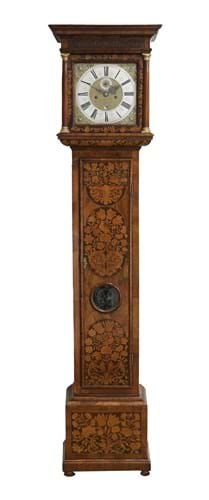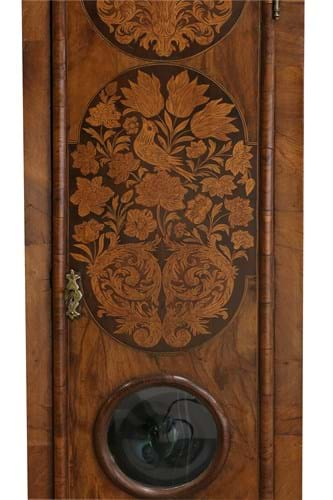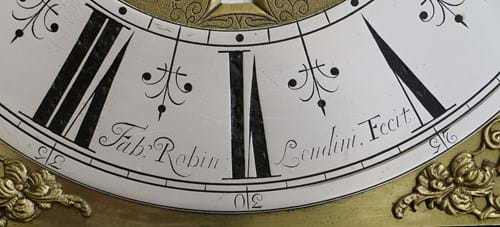Marquetry, the art of applying thin pieces of veneer to a substrate to create decorative patterns, is a technique first used in the ancient world. Revived by craftsmen in the Italian Renaissance, who often created masterpieces in stone (pietra dura), wood marquetry went on to be mastered by Flemish, Dutch and French cabinetmakers.
Marquetry came to England during the Restoration of Charles II in 1660; Dutch ‘inlayers’ arrived in London, introducing the art and cabinetmakers began producing fine tabletops, cabinets, and they began using the techniques on longcase clocks.
Marquetry longcase clocks flourished between the years 1680-1710, a period known as the ‘Golden Age of Clockmaking’. The era saw technical innovation and the finest craftsmanship combine to produce some of the best clocks known to this day, often elaborately decorated with marquetry composed of exotic contrasting woods on oak carcasses.
Stylistic trends in marquetry longcase clocks developed throughout this period, which can be helpful when dating a clock. It is useful to note, however, that these trends apply mostly to London-made clocks, as provincial makers lagged behind in terms of style and innovation.
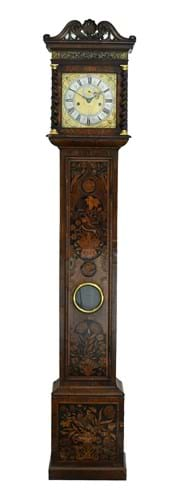
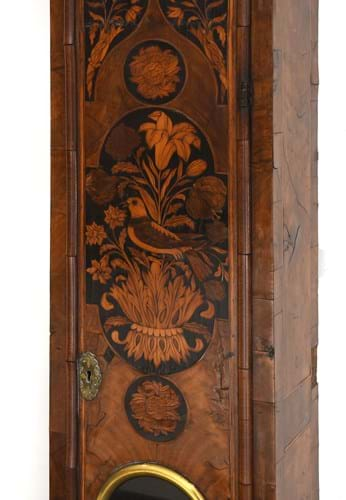
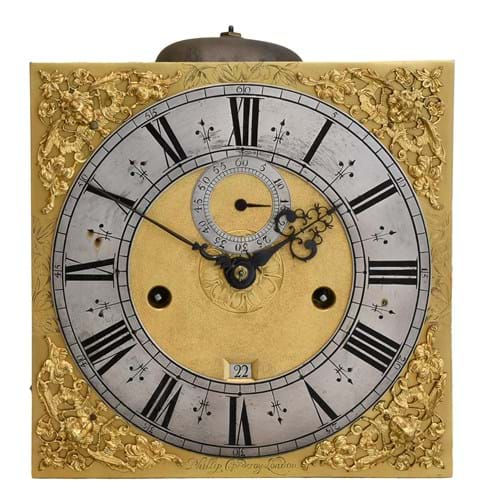
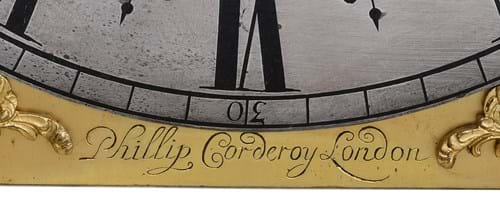
A Good Walnut and Marquetry Month Going Longcase Clock, signed Phillip Corderoy, London, circa 1690, case with a later carved pediment, barley twisted columns, glass side panels, trunk dial with D-ended panels with bird and floral marquetry inlay, base with matching inlay, 10-inch square brass dial with a silvered Roman numeral chapter ring, dial plate signed Phillip Corderoy, London, finely matted dial centre with date aperture and seconds dial, finely cast winged cherub spandrels and floral engraved outer borders, six pillar movement, latched pillars, anchor escapement and outside countwheel striking on a bell
217cm high
Provenance: The Estate of the late Lord Lloyd of Berwick (1929-2024)
Sold together with the original Dart Antiques purchase invoice dated November 1st 1967
Sold for £17,000 plus buyer's premium


